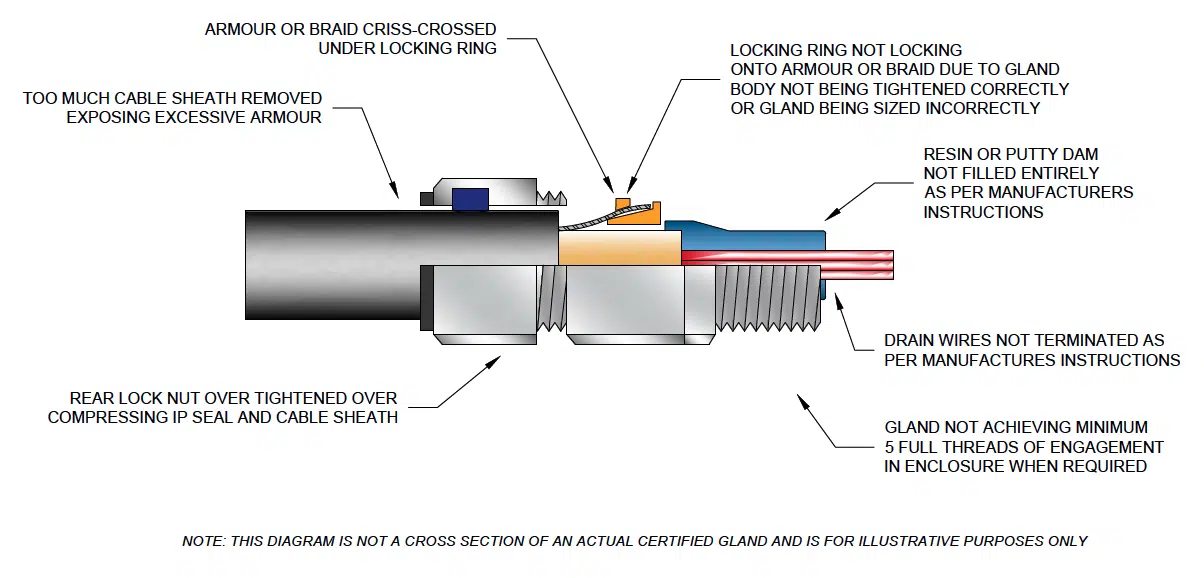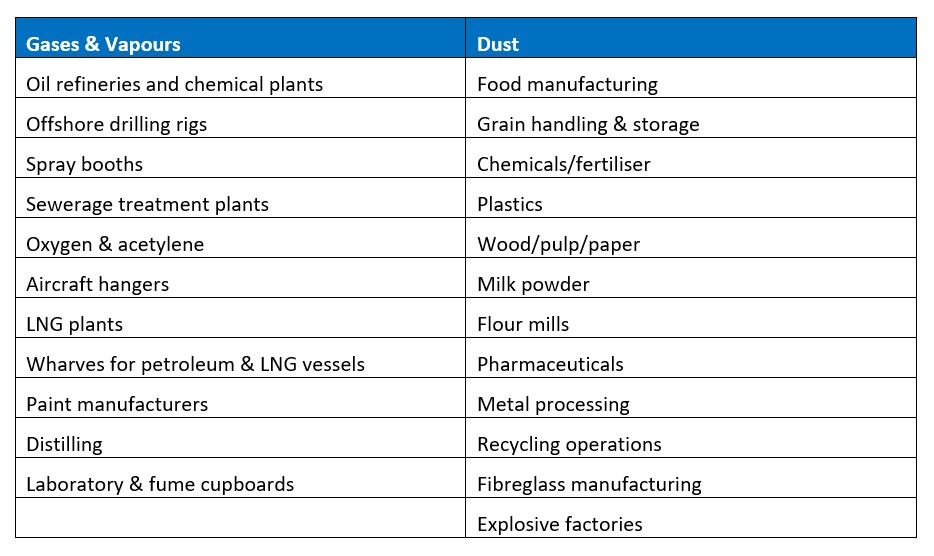The smart Trick of Roar Solutions That Nobody is Talking About
The smart Trick of Roar Solutions That Nobody is Talking About
Blog Article
Fascination About Roar Solutions
Table of ContentsGetting The Roar Solutions To WorkWhat Does Roar Solutions Mean?10 Easy Facts About Roar Solutions Explained
In such an environment a fire or explosion is possible when three basic conditions are met. This is typically described as the "dangerous area" or "burning" triangle. In order to secure installments from a possible surge a method of analysing and categorizing a possibly hazardous location is needed. The function of this is to ensure the right selection and setup of tools to eventually avoid an explosion and to make sure security of life.
(https://www.anobii.com/en/01749dcc41232b575a/profile/activity)
No tools needs to be set up where the surface area temperature of the devices is higher than the ignition temperature level of the offered danger. Below are some typical dust harmful and their minimum ignition temperature level. Coal Dirt 380C 225C Polythene 420C (melts) Methyl Cellulose 420C 320C Starch 460C 435C Flour 490C 340C Sugar 490C 460C Grain Dirt 510C 300C Phenolic Resin 530C > 450C Aluminium 590C > 450C PVC 700C > 450C Soot 810C 570C The possibility of the danger being present in a focus high enough to create an ignition will differ from location to location.
Dangerous area electrical tools possibly designed for use in greater ambient temperature levels. Field Repair Service By Authorised Worker: Difficult testing might not be needed nonetheless details treatments might require to be followed in order for the tools to keep its 3rd party score. Each item of tools with a harmful ranking ought to be assessed separately.
Not known Details About Roar Solutions
The equipment register is a comprehensive database of devices records that includes a minimum collection of areas to determine each thing's location, technological parameters, Ex-spouse category, age, and ecological data. This details is important for tracking and taking care of the tools efficiently within unsafe locations. In comparison, for routine or RBI tasting examinations, the quality will certainly be a mix of Detailed and Close evaluations. The proportion of In-depth to Close examinations will be figured out by the Devices Risk, which is analyzed based on ignition risk (the chance of a resource of ignition versus the chance of a flammable environment )and the harmful location category
( Area 0, 1, or 2). This variant will certainly additionally influence the resourcing requirements for job preparation. As soon as Great deals are specified, you can develop sampling plans based on the sample dimension of each Lot, which refers to the number of arbitrary devices products to be examined. To determine the needed example size, two aspects need to be evaluated: the size of the Great deal and the group of inspection, which shows the degree of initiative that ought to be used( minimized, typical, or increased )to the examination of the Lot. By incorporating the group of examination with the Great deal dimension, you can then develop the appropriate rejection criteria for an example, meaning the permitted number of damaged items located within that sample. For more details on this process, please refer to the Power Institute Standards. The IEC 60079 conventional advises that the maximum period between assessments need to not go beyond three years. EEHA inspections will additionally be conducted beyond RBI projects as component of scheduled maintenance and equipment overhauls or repair work. These inspections can be credited towards the RBI sample dimensions within the influenced Great deals. EEHA inspections are carried out to recognize faults in electric tools. A weighted racking up system is necessary, as a solitary tool might have numerous faults, each with varying levels of ignition risk. If the combined rating of both assessments is much less than two times the fault score, the Lot is regarded acceptable. If the Whole lot is still taken into consideration unacceptable, it should go through a full examination or validation, which might set off more stringent evaluation protocols. Accepted Whole lot: The sources of any faults are identified. If an usual failure setting is discovered, additional equipment may call for assessment and fixing. Faults are categorized by extent( Safety and security, Integrity, House cleaning ), guaranteeing that immediate concerns are analyzed and addressed quickly to mitigate any type of effect on security or operations. The EEHA data source should track and tape the lifecycle of mistakes in addition to the corrective actions taken. Carrying out a durable Risk-Based Assessment( RBI )method is vital for making sure conformity and safety in managing Electric Devices in Hazardous Areas( EEHA) (hazardous area electrical course). Automated Fault Scoring and Lifecycle Administration: Effortlessly manage mistakes and track their lifecycle to enhance inspection precision. The intro of this support for risk-based evaluation better enhances Inspectivity's placement as a best-in-class service for governing compliance, along with for any type of asset-centric inspection usage instance. If you want finding out more, we welcome you to request a demonstration and discover just how our solution can transform your EEHA monitoring procedures.
The Facts About Roar Solutions Uncovered

In terms of eruptive risk, a dangerous area is a setting in which an explosive environment exists (or may be anticipated to be existing) in amounts that require special safety measures for the building and construction, setup and usage of tools. eeha. In this post we discover the challenges encountered in the work environment, the threat control steps, and the called for proficiencies to work securely
It issues of contemporary life that we manufacture, keep or deal with a variety of gases or liquids that are considered flammable, and a series of dirts that are look at here considered combustible. These materials can, in certain conditions, form explosive environments and these can have significant and terrible repercussions. Many of us know with the fire triangular get rid of any among the 3 aspects and the fire can not take place, however what does this mean in the context of unsafe locations? When breaking this down right into its simplest terms it is basically: a mix of a particular amount of release or leakage of a specific material or material, combining with ambient oxygen, and the visibility of a source of ignition.
In most instances, we can do little regarding the degrees of oxygen in the air, yet we can have substantial influence on resources of ignition, for instance electric devices. Harmful areas are documented on the dangerous location classification illustration and are determined on-site by the triangular "EX-SPOUSE" sign. Here, among various other key information, areas are split into three types depending on the hazard, the possibility and duration that an explosive environment will exist; Zone 0 or 20 is considered one of the most dangerous and Zone 2 or 22 is regarded the least.
Report this page